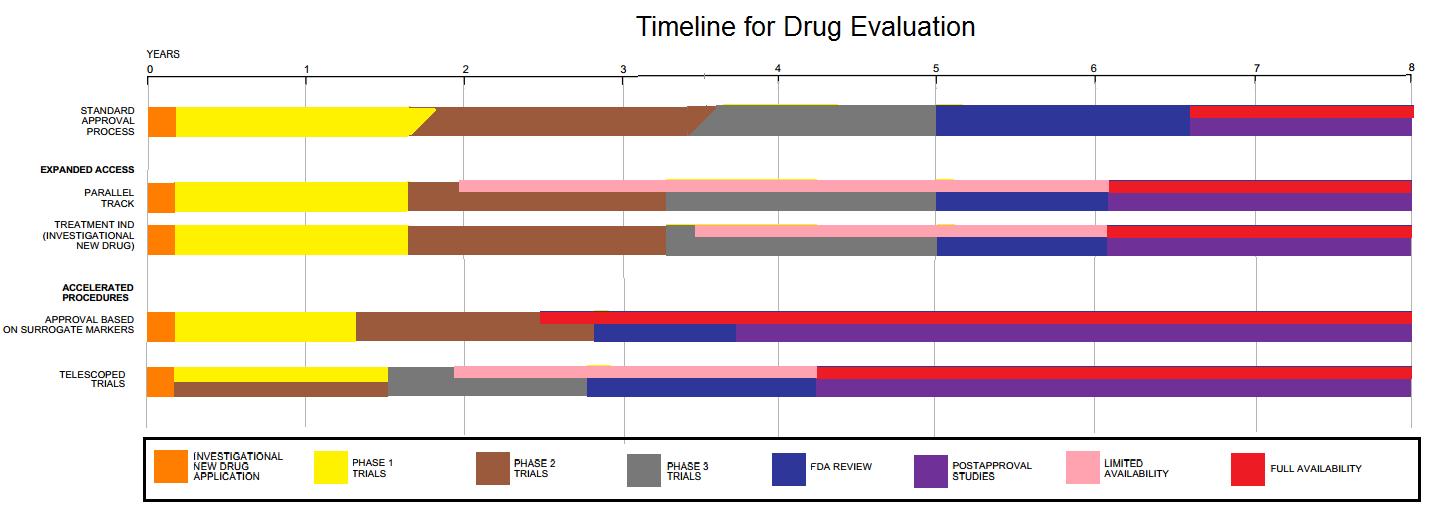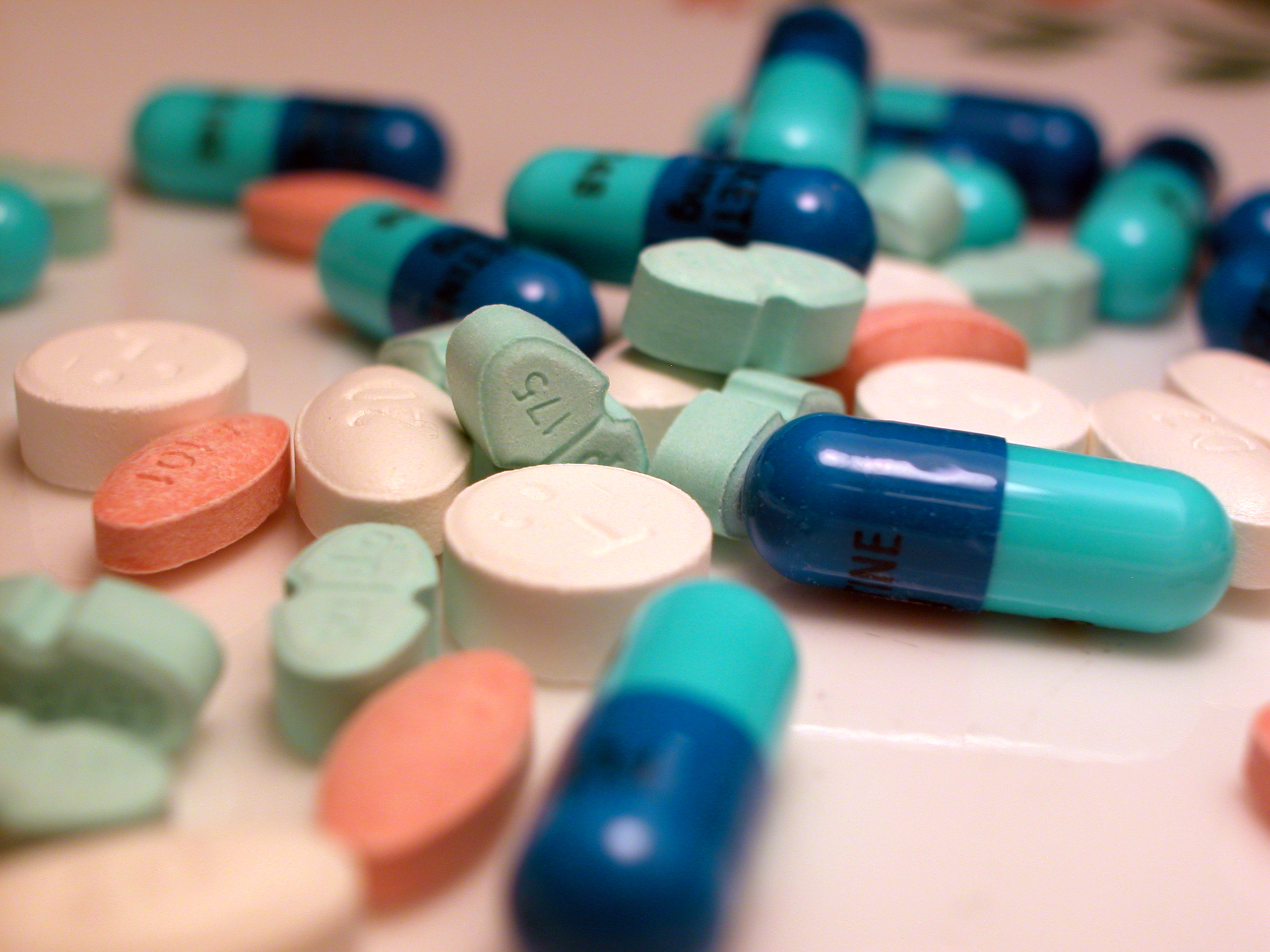|
Drug Pipeline
A drug pipeline is the set of drug candidates that an individual pharmaceutical company or the entire pharmaceutical industry collectively has under discovery or development at any given point in time. The drug pipeline is also sometimes restricted to a particular drug class or extended to mean the process of discovering drugs (the research and development pipeline). The R&D pipeline involves various phases that can broadly be grouped in 4 stages: discovery, pre-clinical, clinical trials and marketing (or post-approval). Pharmaceutical companies usually have a number of compounds in their pipelines at any given time. The drug pipeline is an important indicator of the value and future prospects of a company. Usually the more compounds in the pipeline, and the more advanced stage that these are in the better. Other factors that are taken into account when assessing the value of a pipeline include the size of the target market of each drug A drug is any chemical substance that ... [...More Info...] [...Related Items...] OR: [Wikipedia] [Google] [Baidu] |
Pharmaceutical Company
The pharmaceutical industry discovers, develops, produces, and markets drugs or pharmaceutical drugs for use as medications to be administered to patients (or self-administered), with the aim to cure them, vaccinate them, or alleviate symptoms. Pharmaceutical companies may deal in generic or brand medications and medical devices. They are subject to a variety of laws and regulations that govern the patenting, testing, safety, efficacy using drug testing and marketing of drugs. The global pharmaceuticals market produced treatments worth $1,228.45 billion in 2020 and showed a compound annual growth rate (CAGR) of 1.8%. History Mid-1800s – 1945: From botanicals to the first synthetic drugs The modern era of pharmaceutical industry began with local apothecaries that expanded from their traditional role of distributing botanical drugs such as morphine and quinine to wholesale manufacture in the mid-1800s, and from discoveries resulting from applied research. Intentional ... [...More Info...] [...Related Items...] OR: [Wikipedia] [Google] [Baidu] |
Pharmaceutical Industry
The pharmaceutical industry discovers, develops, produces, and markets drugs or pharmaceutical drugs for use as medications to be administered to patients (or self-administered), with the aim to cure them, Vaccine, vaccinate them, or alleviate symptoms. List of pharmaceutical companies, Pharmaceutical companies may deal in Generic drug, generic or brand medications and medical devices. They are subject to a legal drug trade, variety of laws and regulations that govern the patenting, testing, safety, efficacy using drug testing and legal drug trade, marketing of drugs. The global pharmaceuticals market produced treatments worth $1,228.45 billion in 2020 and showed a compound annual growth rate (CAGR) of 1.8%. History Mid-1800s – 1945: From botanicals to the first synthetic drugs The modern era of pharmaceutical industry began with local apothecaries that expanded from their traditional role of distributing botanical drugs such as morphine and quinine to wholesale manufacture ... [...More Info...] [...Related Items...] OR: [Wikipedia] [Google] [Baidu] |
Drug Discovery
In the fields of medicine, biotechnology and pharmacology, drug discovery is the process by which new candidate medications are discovered. Historically, drugs were discovered by identifying the active ingredient from traditional remedies or by serendipitous discovery, as with penicillin. More recently, chemical libraries of synthetic small molecules, natural products or extracts were screened in intact cells or whole organisms to identify substances that had a desirable therapeutic effect in a process known as classical pharmacology. After sequencing of the human genome allowed rapid cloning and synthesis of large quantities of purified proteins, it has become common practice to use high throughput screening of large compounds libraries against isolated biological targets which are hypothesized to be disease-modifying in a process known as reverse pharmacology. Hits from these screens are then tested in cells and then in animals for efficacy. Modern drug discovery i ... [...More Info...] [...Related Items...] OR: [Wikipedia] [Google] [Baidu] |
Drug Development
Drug development is the process of bringing a new pharmaceutical drug to the market once a lead compound has been identified through the process of drug discovery. It includes preclinical research on microorganisms and animals, filing for regulatory status, such as via the United States Food and Drug Administration for an investigational new drug to initiate clinical trials on humans, and may include the step of obtaining regulatory approval with a new drug application to market the drug. The entire process – from concept through preclinical testing in the laboratory to clinical trial development, including Phase I–III trials – to approved vaccine or drug typically takes more than a decade. New chemical entity development Broadly, the process of drug development can be divided into preclinical and clinical work. Pre-clinical New chemical entities (NCEs, also known as new molecular entities or NMEs) are compounds that emerge from the process of drug discovery. T ... [...More Info...] [...Related Items...] OR: [Wikipedia] [Google] [Baidu] |
Drug Class
A drug class is a set of medications and other compounds that have a similar chemical structures, the same mechanism of action (i.e. binding to the same biological target), a related mode of action, and/or are used to treat the same disease. In several dominant drug classification systems, these four types of classifications form a hierarchy. For example, the fibrates are a chemical class of drugs (amphipathic carboxylic acids) that share the same mechanism of action ( PPAR agonist) and mode of action (reducing blood triglycerides), and that are used to prevent and treat the same disease (atherosclerosis). Conversely, not all PPAR agonists are fibrates, not all triglyceride lowering agents are PPAR agonists, and not all drugs used to treat atherosclerosis are triglyceride-lowering agents. A drug class is typically defined by a prototype drug, the most important, and typically the first developed drug within the class, used as a reference for comparison. Comprehensive Systems ... [...More Info...] [...Related Items...] OR: [Wikipedia] [Google] [Baidu] |
Clinical Trials
Clinical trials are prospective biomedical or behavioral research studies on human participants designed to answer specific questions about biomedical or behavioral interventions, including new treatments (such as novel vaccines, drugs, dietary choices, dietary supplements, and medical devices) and known interventions that warrant further study and comparison. Clinical trials generate data on dosage, safety and efficacy. They are conducted only after they have received health authority/ethics committee approval in the country where approval of the therapy is sought. These authorities are responsible for vetting the risk/benefit ratio of the trial—their approval does not mean the therapy is 'safe' or effective, only that the trial may be conducted. Depending on product type and development stage, investigators initially enroll volunteers or patients into small pilot studies, and subsequently conduct progressively larger scale comparative studies. Clinical trials can vary i ... [...More Info...] [...Related Items...] OR: [Wikipedia] [Google] [Baidu] |
Company
A company, abbreviated as co., is a legal entity representing an association of people, whether natural, legal or a mixture of both, with a specific objective. Company members share a common purpose and unite to achieve specific, declared goals. Companies take various forms, such as: * voluntary associations, which may include nonprofit organizations * business entities, whose aim is generating profit * financial entities and banks * programs or educational institutions A company can be created as a legal person so that the company itself has limited liability as members perform or fail to discharge their duty according to the publicly declared incorporation, or published policy. When a company closes, it may need to be liquidated to avoid further legal obligations. Companies may associate and collectively register themselves as new companies; the resulting entities are often known as corporate groups. Meanings and definitions A company can be defined as an "arti ... [...More Info...] [...Related Items...] OR: [Wikipedia] [Google] [Baidu] |
Medication
A medication (also called medicament, medicine, pharmaceutical drug, medicinal drug or simply drug) is a drug used to diagnose, cure, treat, or prevent disease. Drug therapy ( pharmacotherapy) is an important part of the medical field and relies on the science of pharmacology for continual advancement and on pharmacy for appropriate management. Drugs are classified in multiple ways. One of the key divisions is by level of control, which distinguishes prescription drugs (those that a pharmacist dispenses only on the order of a physician, physician assistant, or qualified nurse) from over-the-counter drugs (those that consumers can order for themselves). Another key distinction is between traditional small molecule drugs, usually derived from chemical synthesis, and biopharmaceuticals, which include recombinant proteins, vaccines, blood products used therapeutically (such as IVIG), gene therapy, monoclonal antibodies and cell therapy (for instance, stem cell thera ... [...More Info...] [...Related Items...] OR: [Wikipedia] [Google] [Baidu] |
Market Share
Market share is the percentage of the total revenue or sales in a market that a company's business makes up. For example, if there are 50,000 units sold per year in a given industry, a company whose sales were 5,000 of those units would have a 10percent share in that market. "Marketers need to be able to translate and incorporate sales targets into market share because this will demonstrate whether forecasts are to be attained by growing with the market or by capturing share from competitors. The latter will almost always be more difficult to achieve. Market share is closely monitored for signs of change in the competitive landscape, and it frequently drives strategic or tactical action."Farris, Paul W.; Neil T. Bendle; Phillip E. Pfeifer; David J. Reibstein (2010). ''Marketing Metrics: The Definitive Guide to Measuring Marketing Performance.'' Upper Saddle River, New Jersey: Pearson Education, Inc. . The Marketing Accountability Standards Board (MASB) endorses the definitions, ... [...More Info...] [...Related Items...] OR: [Wikipedia] [Google] [Baidu] |
Adverse Event Prediction
Adverse event (or Adverse effect) prediction is the process of identifying potential adverse events of an investigational drug before they actually occur in a clinical trial. Predicting adverse events accurately represents a significant challenge to both the pharmaceutical industry and academia, the reason being that our existing knowledge of biology, disease mechanisms (i.e. how a disease affects the healthy state of a human) and drug design is incomplete and sometimes incorrect. On top of that, the biological complexity and differences between living organisms is such that even if a treatment appears to work in the laboratory it may not work in humans. The occurrence of an adverse event during a clinical trial is a significant event, not only because of the risk to humans but also from a financial point of view for the organization (usually a pharmaceutical company) sponsoring the development of the drug in question. As a result, a lot of effort is continuously invested in this ... [...More Info...] [...Related Items...] OR: [Wikipedia] [Google] [Baidu] |
_(6982162417).jpg)

.jpg)

